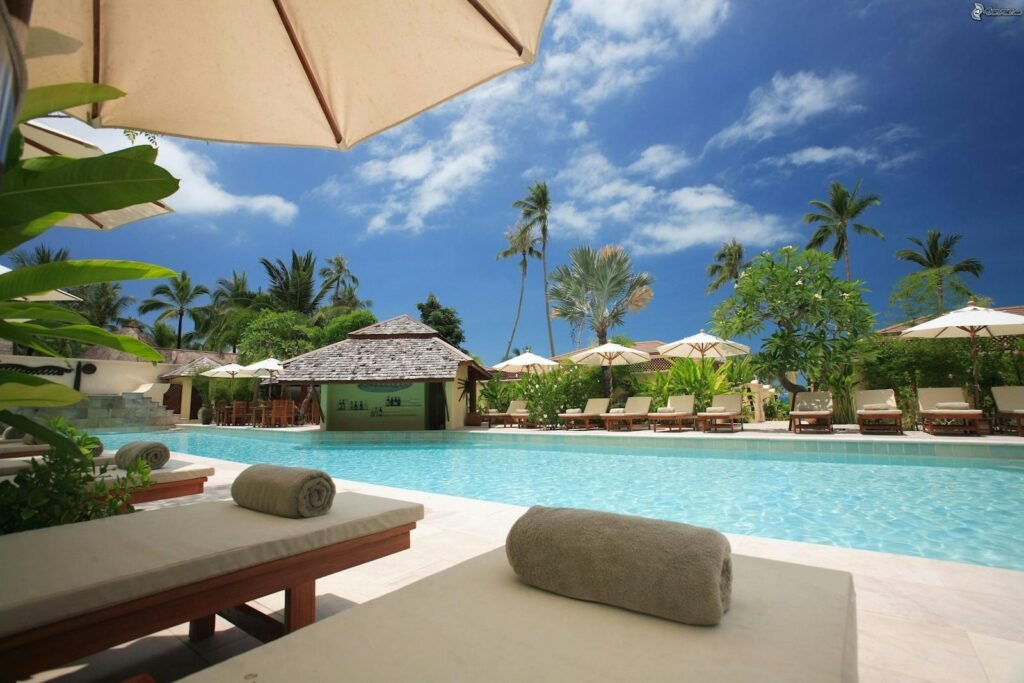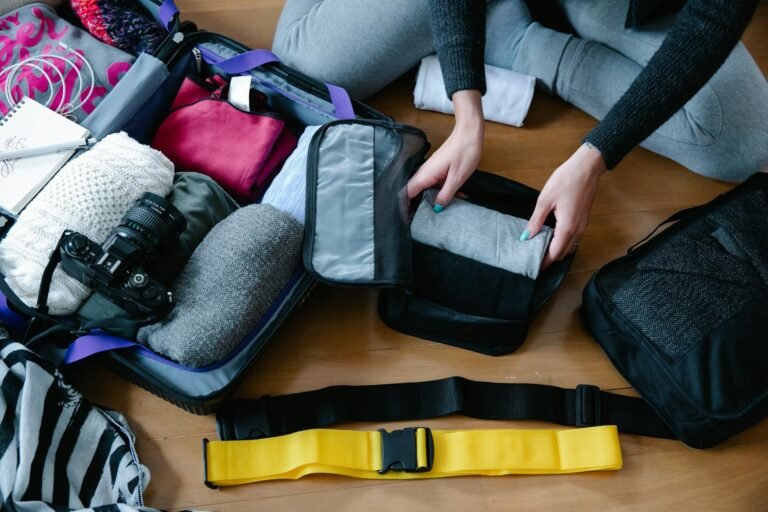Have you ever wondered if a “free vacation” can really turn browsers into buyers and still leave travelers smiling?
I’ve seen how a simple incentive changes conversations. On this page I explain how a marketing boost membership hands members tools to offer complimentary vacation certificates, hotel savings cards, and restaurant vouchers that grab attention fast.
These incentives cover lodging while travelers usually pay taxes and any resort fees. Vouchers arrive instantly, must be activated within seven days, and stay usable for up to 18 months—small deadlines that keep prospects moving.
I’ll show how using marketing tactics—targeted lead magnets and quick follow-ups—can raise appointment show rates and sales without hard sells. This matters for customers and business owners who want real value, not gimmicks.
If you’re serious about finding extra ways to stretch your travel budget, this is where Marketing Boost really shines. They even let you try it out with a free trial, so you can see how the travel incentives and hotel savings work before deciding. You can sign up here.

What You Should Remember
- Complimentary certificates cover hotel lodging; travelers pay taxes or resort fees.
- Vouchers deliver instantly, need activation in 7 days, and work for up to 18 months.
- Members can issue offers from a dashboard to increase appointments and sales.
- Incentives often convert colder audiences better than straight discounts.
- Plans are priced per month, making it simple for small teams and solo owners.
Marketing Boost for U.S. Business Owners: Turn Travel Incentives into Real Sales
I’ve watched simple travel perks flip cold leads into booked calls faster than price cuts. When prospects value an experience, a vacation incentive feels meaningful and prompts action without heavy selling.
Hotel Savings Cards in $100–$500 increments let business owners increase quote requests and show rates at no added cost to the member. Use a $100 card on a landing page to capture a lead and save larger rewards for referral or post-sale moments.
Restaurant Savings Vouchers work great as attendance rewards. With offers at over 100,000 brands across the U.S. and Canada, they nudge customers to keep appointments and improve on-time attendance.
From landing page to closed deal, align the incentive to buyer intent. Deliver the reward via automation after the action you want—like scheduling a demo—and add time-bound reminders to keep momentum friendly and pressure-free.
- Position small incentives for opt-ins and larger vacation incentives for referrals.
- Set clear rules so clients know what’s covered and the activation timelines.
- A/B test landing page headlines and CTAs to learn which incentive attracts qualified prospects fastest.
For real stories on using these tactics, listen to a case study episode on thriving with marketing boost.
How Marketing Boost Works
I’ll walk you through the exact steps I use to turn an incentive into a smooth, trackable touchpoint for prospects.
Join, add incentives, and send certificates
First, join the plan and add the incentive to your landing page or offer. As a member you can issue a certificate from the dashboard by entering a recipient’s name and email.
Activation timelines and usage
The voucher delivers instantly to your client, creating a moment you can reference in follow-ups.
They have seven days to activate and up to 18 months to use the vacation stay. Lodging is typically covered; travelers pay taxes and any resort fees.
Client experience and best practices
No timeshare presentations required — redemption is straightforward and client-friendly.
- Issue, confirm delivery, remind within the 7‑day activation window.
- Tag recipients in your CRM so you know when to nudge and request a quick testimonial after booking.
- Use clear copy that sets expectations: what the certificate covers and what it doesn’t.
Want social proof? See customer reviews on Trustpilot page.
What You Can Give Away: The Core Incentives Suite
Let’s break down the core offers you can give away and where they fit in your funnel. I focus on three simple incentives that move prospects from curious to committed.

Complimentary vacation certificates
What’s covered: lodging is included while guests pay taxes and any resort fees. Typical U.S. stays run three nights; international stays often allow five nights.
Use these larger certificates for referrals, post‑purchase surprises, or high‑value demos so you reward meaningful actions without overspending. See the free trial here.
Hotel Savings Cards
Cards come in $100, $200, $300, and $500 cash credit amounts. They cost members nothing extra to distribute and are perfect for quote requests and appointment booking.
The psychology is simple: a small, tangible reward increases show rates because prospects feel valued before they buy.
Restaurant Savings Vouchers
With offers at over 100,000 brands across the USA and Canada, restaurant savings vouchers are ideal as punctuality nudges for virtual or in‑home presentations.
- Mix small cards for top‑of‑funnel opt‑ins and save certificates for loyalty or big wins.
- Be clear in copy about activation windows, availability, and what the certificate covers so customers feel confident.
- Track which incentives lift appointments, show rate, and sales, then lean into the winners.
Who Benefits Most from Marketing Boost
Small, well-timed incentives can make a big difference for businesses that rely on live conversations.
I use this program with service pros, local owners, and affiliate teams to turn interest into action. It works because the offer feels like a genuine thank-you, not a hard sell.
Service providers, local businesses, and affiliates
Who gets the most lift: roofers, solar crews, home services, gyms, salons, and affiliate marketers who need higher conversion rates.
- Restaurant Savings Vouchers increase punctuality for telesales and in-home demos.
- Hotel Savings Cards are ideal for pipeline-heavy fields like insurance, real estate, and SaaS demos.
- Small shops can offer modest rewards that still feel generous in a crowded neighborhood.
- Affiliates often use incentives to lift opt-in rates and attract new clients faster.
- Members can pick a membership tier that fits their team and scale month by month.
Sales teams and time-saving workflows
For remote or in-person reps, I recommend simple rules: when to send which incentive, how to log it, and a short follow-up script.
“Frame the offer as a thank-you. That keeps trust high and turns prospects into repeat clients.”
Use clear scripts, tag recipients in your CRM, and measure show rates. Over time you’ll see which incentives actually boost sales and new client flow without raising ad spend.
Pricing and Membership Plans
One way I’ve managed to consistently get better hotel rates is by using Marketing Boost. Even just the free trial lets you explore deals and perks that many travelers overlook, making it easier to save without extra effort. See how it works here.
Here’s how the monthly tiers line up so you can match features to team size. I’ll keep this plain and practical so business owners can compare value quickly.
Silver — $66 per month
Starter access for testing incentives and quick validation. Silver works well if you want to trial opt-ins, run a few promos, and measure early lift in lead generation and sales.
Gold — $133 per month
Scaling tier for teams running regular demos or appointments. Gold supports steady incentive distribution and tracking so you can build a reliable pipeline without guessing.
Platinum — $208 per month
Advanced coverage for high-volume campaigns and larger teams. Platinum adds predictable distribution, better reporting, and controls that save time when you run multiple daily campaigns.
- Many incentives (like Hotel Savings Cards) can be issued at no extra cost to members, helping you forecast spend with confidence.
- I recommend simple daily and weekly rhythms: issue, tag in CRM, and nudge within the activation window to keep momentum.
- Use a 30‑day test to track opt-ins, meetings, show rate, and closed deals. Compare those lifts to plan cost per month to estimate ROI.
Decision checklist: choose Silver to validate, Gold to scale predictable pipeline activity, and Platinum when you need volume and reporting. If you want, try a free trial to see how incentives move your numbers before you commit.
Geography, Coverage, and Limitations
Geography shapes what a voucher actually delivers, so I map expectations before customers pick dates.
U.S. stays normally cover three nights. International trips typically include five nights. Tell customers this up front so they pick dates with confidence.

Availability, fees, and booking realities
Popular dates fill fast. For the best rates and room choices, encourage off-peak travel or early booking.
Travelers pay taxes and any resort fees. Being clear about those costs reduces surprises and keeps customers happy.
- Redemption at hotels worldwide depends on availability and program rules.
- Blackout dates and property-specific fees can apply—verify before confirming.
- Compare rates and check for hidden charges to protect perceived value.
Try a short FAQ in confirmation emails that lists nights covered, fee responsibilities, blackout dates, and a quick contact link. Clear terms build trust, lower support time, and keep redemption rates high.
Implementation Playbook: Using Marketing Boost in Your Marketing
Start by mapping exactly where an incentive will appear on your page and what action it should trigger. That focus keeps offers crisp and measurable.
Landing page placement: put the incentive above the fold and next to the primary CTA so visitors see value immediately. Add a one-line benefit and a small trust badge nearby.
Funnel placements that convert
Use a simple funnel map: opt-in → schedule → attend. Reserve higher-value vouchers for post-book or referral moments.
- Top of funnel: hotel savings cards for quick opt-ins.
- Middle funnel: restaurant savings as a punctuality nudge for booked calls.
- Post-call: vacation certificates to reward conversions and referrals.
Email, SMS, and telesales scripts
Keep confirmations short and clear: what’s included, activation steps, and deadlines. That reduces confusion and raises redemption.
- SMS example line: “Thanks — your restaurant savings voucher is on the way. Tap to activate in 7 days.”
- Email example: “Your hotel savings card arrived — activate now and book within 18 months. Taxes may apply.”
- Telesales pitch: present restaurant savings as a punctuality perk for virtual or in-home visits.
Operational checklist: tag recipients in the CRM, auto-send reminders, and segment warm vs. cold clients to protect higher-value incentives for deeper-funnel actions.
“Reward the action, clarify the rules, and nobody feels misled.”
Use Cases That Win New Clients
Here are three practical incentive plays I use to turn prospects into booked calls and loyal customers. Each play ties a clear action to an instant reward, so people feel valued and move faster.
Lead magnets: hotel savings cards for quote requests
Give away a $100–$500 Hotel Savings Card as a lead magnet to nudge quote requests. These cards cost members nothing extra to issue and feel like cash to prospects.
Send the card instantly by email and confirm activation steps. Segment by deal size and hold larger credits for higher-value opportunities.
Show-rate boosters: restaurant savings vouchers for appointment attendance
Use restaurant savings vouchers as a punctuality perk for virtual or in‑home meetings. They cover popular local and national brands across the U.S. and Canada.
This small, tangible reward raises on‑time attendance and improves appointment conversion into sales.
Post-purchase surprises: vacation certificates to increase referrals and reviews
After a sale, delight customers with a vacation certificate to encourage referrals and five‑star reviews. Ask recipients to book travel and then share a brief review after their trip.
Combine a thank-you stack: a small card up front and a vacation certificate after close. Track booked calls, show rates, and close rates to see which offers pull best for new clients.
- Confirm delivery and activation timelines in every message.
- Reserve bigger perks for larger deals to protect margins.
- Mention recognizable restaurants to make vouchers feel real and exciting.
“Reward the action, set clear expectations, and let happy travelers become your best social proof.”
Handling Objections and Setting Expectations
Objections are normal—here’s how I turn skepticism into clear expectations that keep clients happy.
Free vacation vs. not all‑expenses‑paid: clear messaging that builds trust
“Complimentary lodging only — taxes and resort fees are the traveler’s responsibility.” Use that exact line in confirmations so prospects know what to expect and don’t feel misled.
I call out the activation timeline clearly: the voucher arrives instantly, must be activated within seven days, and is redeemable for up to 18 months. That simple schedule reduces confusion and speeds decisions.

Addressing “too good to be true”: social proof and transparent terms
Show reviews and real redemption examples. Short, factual proof calms doubts more than long guarantees.
- Place a mini-FAQ near your CTA: what’s included, what’s not, how to activate.
- Mention taxes/resort fees plainly and offer examples so clients see real totals.
- Pair a short free trial with a small incentive ethically to encourage quick action.
- Train reps on consistent language to avoid friction words and handle edge cases.
- Ask for a brief testimonial right after a positive interaction to compound trust.
Be upfront and friendly. Clear terms protect your reputation and help these incentives work as intended month after month.
Results to Track and Optimize
Good data turns a nice idea into repeatable wins—start by tracking the funnel from impression to sale.
I focus on four core KPIs: opt-in rate, appointment show rate, close rate, and cost to acquire a customer (CAC). Track impressions, clicks, and opt-ins first to spot leaks early.
- Keep a simple dashboard that shows impressions, opt-ins, show rates, and closed deals.
- Add CAC and average order value so unit economics tell a clear story.
- Tag leads by offer (hotel savings vs. restaurant vouchers) to attribute sales to specific incentives.
Run weekly check-ins and a monthly deep dive. Test placement, copy, and offer size with small A/B tests. Send reminder messages timed before activation windows close to recover lost opportunities.
“Segment by customer type and deal size—different audiences prefer different incentives, and the numbers will show it.”
Use customer feedback alongside metrics to refine scripts and emails. Finally, set baseline rates and lift targets, and build a quarterly optimization plan so your incentives keep improving over time.
For a practical optimization framework, see a short guide on optimization post and a related travel incentive study.
Marketing Boost vs. Other Incentive Options
When you compare dedicated platforms to DIY perks, the difference shows up in time saved and fewer surprises.
A dedicated incentive platform centralizes issuing, tracking, and redemptions. That means fewer manual errors, consistent rules for guests, and clear reports so your team knows what works.
DIY gift cards can work for tiny tests, but they create compliance risk and inconsistent experience as you scale. The real opportunity cost is time: chasing ad-hoc deals and fixing failed redemptions eats margins fast.
Why a dedicated system beats one-off gift cards
I prefer predictable processes when running offers across reps or locations.
- Central issuing avoids duplicate codes and redemption confusion.
- Built-in tracking shows which incentives lift opt-ins and sales.
- Standardized rules protect your reputation and lower support time.
From Advertising Bait to today’s partner ecosystem
Our platform evolved from Advertising Bait to Advertising Boost and then to its current form because members asked for better coverage and simpler ops.
That member feedback shaped partnerships with resorts, hotels, and restaurants, so you aren’t chasing ad-hoc deals that collapse at checkout. Hotels worldwide can be part of the redemption mix, subject to availability and terms.
“A vetted partner network turns a nice offer into an actual, bookable stay for your client.”
When DIY still makes sense: very small tests with one rep. Otherwise, a boost membership pays for itself through saved time, fewer refunds, and cleaner reporting.
Decide by four things: cost, control, coverage, and customer experience. If you want a practical comparison or to explore partner options, see a related study at Marketing Boost.
Final Thoughts on Marketing Boost Travel Incentives
This is the practical takeaway: the right incentive, paired with clear rules and tracking, turns curiosity into action. I use the dashboard to issue hotel savings cards and restaurant vouchers that lift calls, show rates, and real sales.
Key points: hotel cards ($100–$500) cost members nothing extra to give away, vacation certificates cover typical lodging (taxes and resort fees apply), and vouchers must be activated in seven days and used within 18 months.
If you run a small team, start with a lighter plan per month, validate the lift in booked calls, and scale when the numbers hold. Consider a free trial to test giving away free value and learn which offers move the needle for your client and customer base.
If you want to make the most of your next trip and unlock savings that many travelers miss, I highly recommend giving Marketing Boost a try. Their free trial is a simple way to see how much you could save on hotels and vacations—don’t miss out on the perks before your next booking. Check it out here.
For another great read, don’t miss our post covering how to score free vacations with trusted travel incentive programs.






